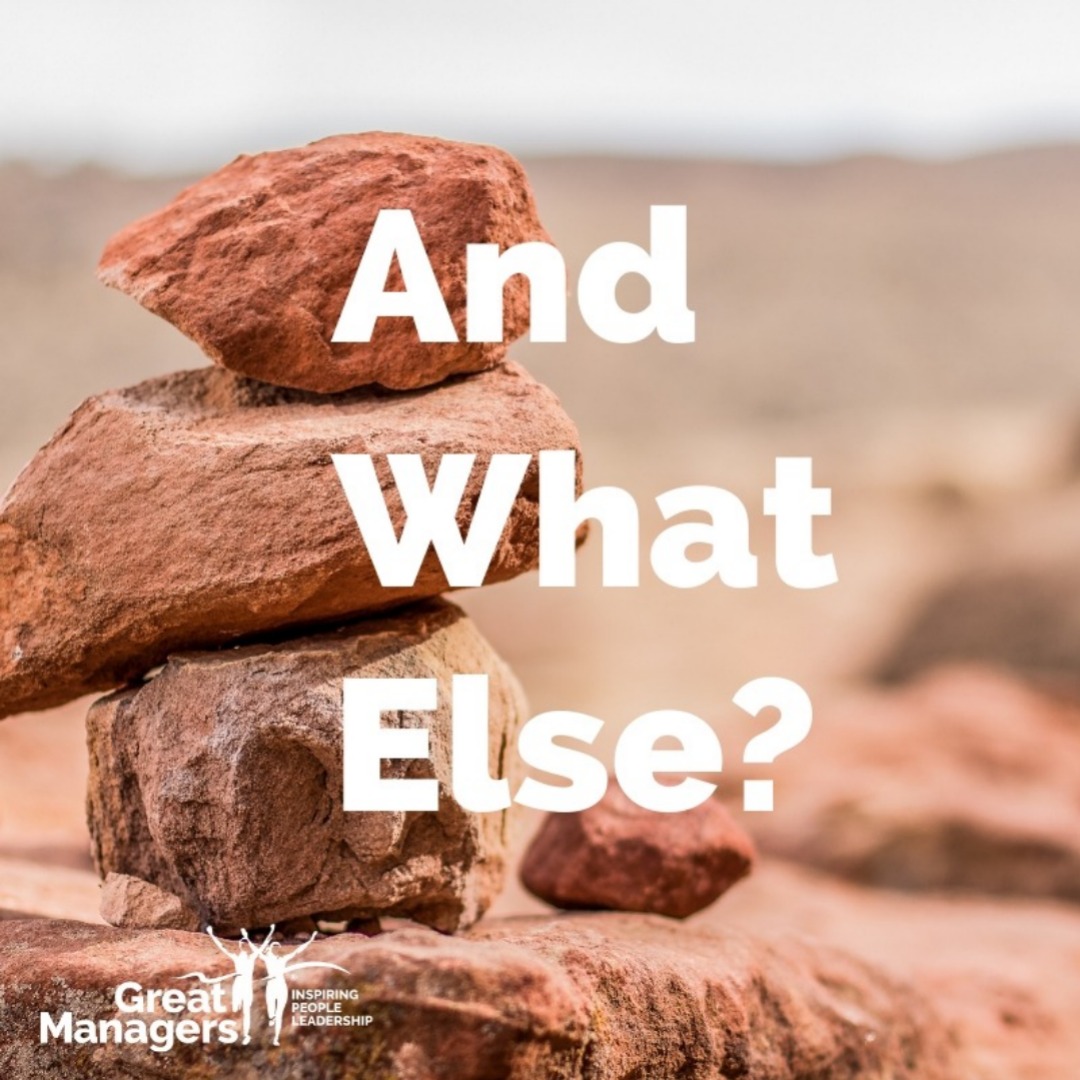3 Clever Coaching Questions to Become a Great Coach
Starting from today, you can be significantly more effective as a manager by asking the right coaching questions to your team members.
Great Coaching is one of the best ways in which leaders can increase the capacity and capability in their team, and help individuals and organisations reach their goals. Developing manager’s coaching skills has become even more important in these fast-paced times because organisations are increasingly calling on people to deliver more with fewer resources.
In the above extract from a recent Great Managers MasterClass we look at:
- The 3 Principles of Coaching Conversations
- The 2 types of coaching conversations
- How to Build your Coaching Conversations toolkit with 3 of the top Coaching Questions every manager needs to know
[Don’t like videos? Video Transcription Below!]
How to Become a Great Coach with 3 Clever Coaching Questions
The 3 Principles
Coaching conversations can be divided into 3 parts or principles.
The first part is a conversation for Awareness, which is about getting the clearest possible picture of the current reality.
The second part is a conversation for Choice, which is about getting the clearest possible picture of the desired future outcome
The third part is a conversation for Trust, and this is where the coachee gains greater access to both internal and external resources that help them to take action to move from their current reality to the desired future.
These principles: Awareness, Choice, and Trust, form the flow of a coaching conversation and are the same ones that provide the foundation for learning itself, as well as for focus of attention.
The 2 Types of Coaching Conversations
There are Performance Coaching Conversations and Development Coaching Conversations.
Performance Coaching is about addressing and fixing a specific problem or challenge.
It’s like putting out the fire, or building up the fire, or banking the fire. It’s everyday stuff and it’s important and necessary.
Development Coaching is about turning the focus from the issue to the person dealing with the issue, so the person who’s managing the fire.
This conversation is significantly more powerful. It can make a real impact and a real difference to someone.
The focus is on calling the person forward to learn, to improve, and to grow, rather than just on getting something sorted out.
3 Clever Coaching Questions to Become a Great Coach

I’m going to take you now through a series of different questions to build your Coaching Conversations Toolkit because it’s questions that best generate Awareness, Choice, and Trust.
It’s questions that encourage responsibility and taking action, and it would be easy if any old question would do… but it won’t.
Your questions need to be clever coaching questions that guide and encourage new thinking and new actions in your coachee.
Get ready to take some good notes as we go through this part of the MasterClass.
Think of these questions like a menu to choose from. You’re not necessarily going to be asking all of them in the one conversation.
You need to be using your judgement about which question to ask at which time, but this will really get you started in terms of building your toolkit.
Question #1 – The Kickstart Question
We’ll start with the Kickstart Question.
This is your opening question, the one that helps you get the coaching conversation started.
Now in Strategy 3 of the Great Managers Academy, you learn about the importance of using an effective opener to start a Critical Conversation on the right foot, so you want to start a coaching conversation well, too.
The Kickstart Question is an almost fail-safe way to turn a chat into a real coaching conversation.
The kickstart question is, “what’s on your mind?”
This is an open question that invites people to get to the heart of the matter and share what’s the most important to them at that moment.
You’re not telling them or guiding them. You’re raising their awareness, and you’re granting them the autonomy to make the choice for themselves, and yet this question is focused, too.
It’s not an invitation to tell you anything and everything. It’s an encouragement to go to what’s front of mind for them.
It could be something exciting, or it could be something that’s provoking anxiety.
It’s a question that says, “Let’s talk about the thing that matter most.”
Extensions on the Kickstart Question, you might say, “What’s on your mind?”, and then you might say, “Where should we begin?”
Or to get more focused, “where’s the best place for us to begin?”, or “where’s the most useful place for us to begin?”
They’re all extensions on that, so when you start your Coaching Conversation, don’t dance around, or use small talk, or think that you have to develop an agenda for the conversation.
Just get started, skillfully.
Question #2 – The Three Ps
The next question is the Three Ps.
The Three P question is used to choose what to focus on in a coaching conversation. It’s for deciding which aspect of the challenge might be at the heart of a difficulty that the person is working through.
A challenge might typically be centred on:
- The Project itself,
- a Person or a People-related thing,
- or a Pattern of behaviour.
When we talk about the Project here, the Project is the content of the situation, the stuff that’s being worked on.
It’s the easiest place to go to and the most familiar for most of us. Often you start here, and then check whether the conversation would benefit from one or both of the other Ps.
The People part is about relationships and some of the human stuff. It might be human beings bumping into other human beings, and maybe some tension or conflict between people.
The Pattern is where you’d be looking at patterns of behaviour and ways of working that you’d like to change, and this area is most likely where coaching for development conversations will emerge.
It’s not always appropriate to have a conversation with this focus, but this is where the growth can come from.
Let’s look at how you’d put these Three Ps into practise…
You’ve asked the question, “what’s on your mind?”, and they’ve answered with whatever it is that they’re working on, and you might be thinking to yourself, “hmm, that’s big. How could we chunk that down?”
You say something like this:
“There are three facets of that that we could look at: the Project side, any challenges around the actual content of the situation, or we could focus on the People side, so any issues with team members or colleagues, or we could focus on the Patterns aspect, so what could be getting in the way from your end or your style?”
Then you ask them:
“Where would you like to start?”
It doesn’t matter which one they pick. It will be a strong start to the conversation, and then once you’ve done one part of it, you might check in about the other one or two Ps before moving on, if that’s necessary.
Question #3 – The AWE question
The next question is the AWE Question, and AWE stands for:
“And What Else?”
That’s how you can remember that one. This question is about getting people to generate more options.
It’s particularly useful if the coachee is moving straight to the obvious or familiar solution, or when you’re not sure what’s going on, and you just need a moment or two to figure things out.
According to Michael Bungay-Stanier, this question has magical properties, and he says that with seemingly no effort, this question can create more wisdom, more insights, more self-awareness, and more possibilities out of thin air.
There are three reasons that it does that.
- Firstly, more options can lead to better decisions,
- Secondly, as the coach, you reign yourself in. It actually makes you pause a little bit, and it tames that advice monster, which is the part of you that knows the answer and is desperate to give it.
- Thirdly, you buy yourself, and your brain, (and their brain) a little bit of time by asking this question.
Often when we have a problem, we limit ourselves to the obvious solutions, the black and white solutions, or the known and familiar, so it might be, “should we do this or shouldn’t we?”, or “we can do this or we can do that.”
We stick to what’s familiar.
Doing this blocks creativity, and sometimes the best solutions take some prompting, so here’s how you’d use the AWE question:
You’ve asked the question, “what’s on your mind, and what aspect of that would you like to focus on?” It’s not unusual for people, once they’ve shared this information with you, to move straight to options and solutions.
When someone shares an option, you ask, “And What Else might be possible?”
You stay curious and genuine.
Remember, it’s not just about the words you use, it’s about your state as you’re doing it, so your way of being is leading.
Ask in a curious and genuine way, and try asking it one or two times.
Experiment a little bit and move on when it’s time. When the energy is going out of the conversation. Someone might say, “Nope, nothing else!”
Now you’ve got closure, and it’s time to move on.
If you would like to learn the remaining 7 Coaching Questions to become a great coach, please contact us or find out more about the Great Managers Academy here.
Subscribe to the PODCAST of the Great Managers® MasterClass










